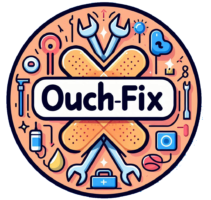Pain is something we all experience at some point—whether it’s from an injury, bad posture, or a long-term condition. It can make everyday life difficult, but the good news is that physiotherapists specialize in helping people manage pain in natural and effective ways.
In this article, we’ll go over some of the best pain management tips recommended by physiotherapists to help you feel better and move more comfortably.
Understanding Pain: Acute vs. Chronic
Pain can be short-term or long-term, and understanding the difference is important.

- Acute pain happens suddenly, usually due to an injury or surgery, and improves as you heal.
- Chronic pain lasts for months or even years and is often linked to conditions like arthritis, fibromyalgia, or nerve issues.
Common Pain Issues Physiotherapists Treat
Physiotherapists help people with many types of pain, including:
✔ Back and neck pain
✔ Joint pain (knees, shoulders, hips)
✔ Muscle strains and sprains
✔ Arthritis and inflammation-related pain
✔ Sports injuries
Top Physiotherapist-Recommended Pain Management Tips

1. Maintain Good Posture
Slouching can lead to pain, especially in the neck, back, and shoulders. Try to sit and stand with a straight back and relaxed shoulders. Using an ergonomic chair and keeping your screen at eye level can also help.
2. Keep Moving with Gentle Exercises
Too much rest can actually make pain worse. Simple activities like walking, swimming, or cycling help keep your muscles and joints flexible while reducing stiffness.
3. Use Heat and Cold Therapy
- Cold therapy (ice packs) helps reduce swelling and numbs sharp pain—best used within the first 48 hours of an injury.
- Heat therapy (warm compresses or heating pads) relaxes muscles and improves circulation—great for chronic pain.
4. Stretch Regularly
Stretching helps prevent stiffness and improves flexibility. Simple moves like neck tilts, hamstring stretches, and shoulder rolls can make a big difference.

Also Read: What Common Misconceptions About Pain Management do Experts Highlight?
5. Strengthen Your Muscles
Weak muscles can put extra strain on your joints, leading to pain. Strength training, resistance bands, and bodyweight exercises can help support your joints and reduce discomfort.
6. Improve Your Sleeping Position
Sleeping the wrong way can lead to pain. Try using a supportive mattress and pillows to keep your spine aligned. Sleeping on your back or side with a pillow between your knees can also help.
7. Try Hands-On Therapy
Physiotherapists use techniques like massage and joint mobilization to relieve pain and improve movement. You can also try self-massage at home using a foam roller or massage ball.
8. Manage Stress
Stress can make pain worse by causing muscle tension. Techniques like deep breathing, meditation, and guided relaxation can help you feel more at ease.
9. Explore Mind-Body Techniques
Yoga, meditation, and breathing exercises not only help with relaxation but also improve flexibility and pain tolerance. Even a few minutes of deep breathing can make a difference.
10. Set Up an Ergonomic Workspace
If you work at a desk, make sure your chair supports your lower back, your screen is at eye level, and your desk is at a comfortable height to avoid strain.
11. Stay Hydrated and Eat Well
Not drinking enough water can lead to muscle cramps and stiffness. Eating anti-inflammatory foods like berries, nuts, and leafy greens can also help manage pain naturally.
12. Use Self-Massage and Foam Rolling
A foam roller or massage ball can help relieve tight muscles and improve blood flow. Rolling over sore areas for just a few minutes daily can make a big difference.
13. Seek Professional Physiotherapy
If pain doesn’t improve, seeing a physiotherapist can help. They offer personalized treatments like manual therapy, dry needling, and customized exercise plans.

Also Read: What Advice is Available for Managing Pain Without Medication?
14. Avoid Pain Triggers
Pay attention to what makes your pain worse and adjust your habits. Small changes—like lifting objects properly or adjusting your chair height—can prevent discomfort.
15. Stay Consistent with Your Pain Management Plan
Pain relief takes time, so be patient and stick to your routine. Follow your physiotherapist’s advice, stay active, and track your progress to stay motivated.




